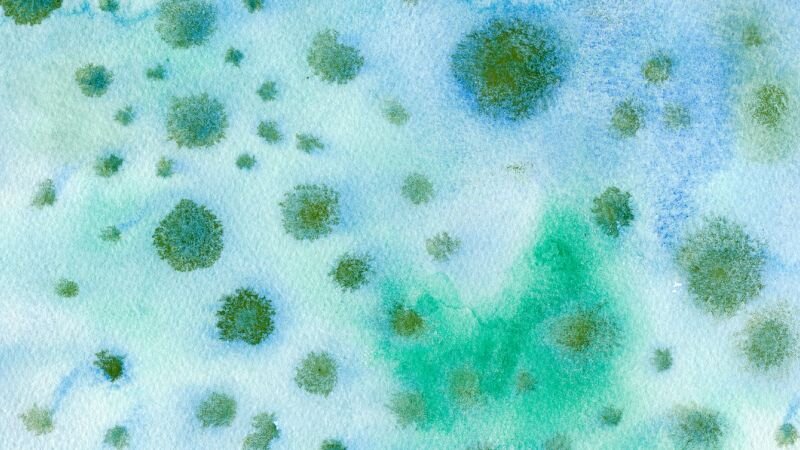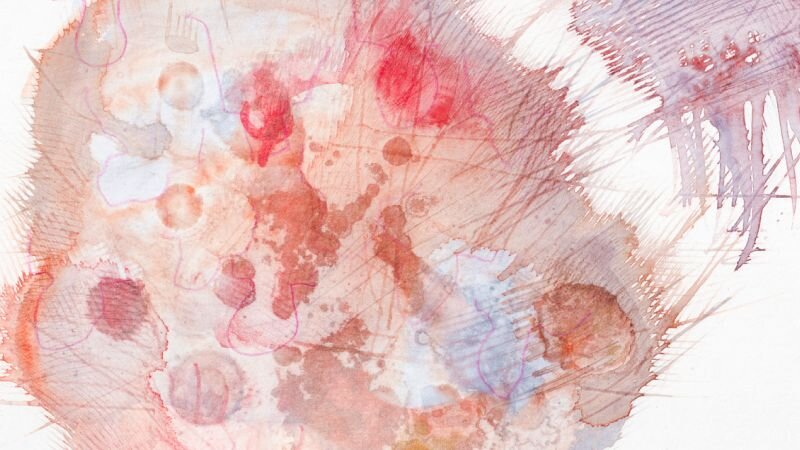
Here’s what to know about setting SMART goals for therapy
Goal setting in counseling helps you establish clear objectives. Learn how to create goals to track progress and make the most of your sessions.

Here's how to write a treatment plan for bipolar I disorder, plus information about distinguishing between bipolar subtypes and tailoring treatment accordingly.
Mental-health treatment plans are never one-size-fits-all, and bipolar disorder exemplifies why that’s the case. Bipolar has multiple subtypes — so to craft an effective treatment plan, you must carefully assess your patient’s symptoms to determine which diagnosis is most appropriate and proceed from there. These subtypes include:
This guide will focus on how to write a treatment plan for bipolar I disorder, but it will also provide information about distinguishing between bipolar subtypes and tailoring treatment plans accordingly.
To be diagnosed with bipolar I disorder, a client must have experienced at least one manic episode. The DSM-5-TR outlines the following criteria for a bipolar I diagnosis:
For a diagnosis of bipolar I disorder, it is necessary to meet the following criteria for a manic episode. The manic episode may have been preceded by and may be followed by hypomanic or major depressive episodes.
Manic Episode
A. A distinct period of abnormally and persistently elevated, expansive, or irritable mood and abnormally and persistently increased activity or energy, lasting at least 1 week and present most of the day, nearly every day (or any duration if hospitalization is necessary).
B. During the period of mood disturbance and increased energy or activity, three (or more) of the following symptoms (four if the mood is only irritable) are present to a significant degree and represent a noticeable change from usual behavior:
1. Inflated self-esteem or grandiosity.
2. Decreased need for sleep (e.g., feels rested after only 3 hours of sleep).
3. More talkative than usual or pressure to keep talking.
4. Flight of ideas or subjective experience that thoughts are racing.
5. Distractibility (i.e., attention too easily drawn to unimportant or irrelevant external stimuli), as reported or observed.
6. Increase in goal-directed activity (either socially, at work or school, or sexually) or psychomotor agitation (i.e., purposeless non-goal-directed activity).
7. Excessive involvement in activities that have a high potential for painful consequences (e.g., engaging in unrestrained buying sprees, sexual indiscretions, or foolish business investments).
C. The mood disturbance is sufficiently severe to cause marked impairment in social or occupational functioning or to necessitate hospitalization to prevent harm to self or others, or there are psychotic features.
D. The episode is not attributable to the physiological effects of a substance (e.g., a drug of abuse, a medication, other treatment) or another medical condition.
Note: A full manic episode that emerges during antidepressant treatment (e.g., medication, electroconvulsive therapy) but persists at a fully syndromal level beyond the physiological effect of that treatment is sufficient evidence for a manic episode and, therefore, a bipolar I diagnosis.
Note: Criteria A–D constitute a manic episode. At least one lifetime manic episode is required for the diagnosis of bipolar I disorder.
Hypomanic Episode
A. A distinct period of abnormally and persistently elevated, expansive, or irritable mood and abnormally and persistently increased activity or energy, lasting at least 4 consecutive days and present most of the day, nearly every day.
B. During the period of mood disturbance and increased energy and activity, three (or more) of the following symptoms (four if the mood is only irritable) have persisted, represent a noticeable change from usual behavior, and have been present to a significant degree:
1. Inflated self-esteem or grandiosity.
2. Decreased need for sleep (e.g., feels rested after only 3 hours of sleep).
3. More talkative than usual or pressure to keep talking.
4. Flight of ideas or subjective experience that thoughts are racing.
5. Distractibility (i.e., attention too easily drawn to unimportant or irrelevant external stimuli), as reported or observed.
6. Increase in goal-directed activity (either socially, at work or school, or sexually) or psychomotor agitation.
7. Excessive involvement in activities that have a high potential for painful consequences (e.g., engaging in unrestrained buying sprees, sexual indiscretions, or foolish business investments).
C. The episode is associated with an unequivocal change in functioning that is uncharacteristic of the individual when not symptomatic.
D. The disturbance in mood and the change in functioning are observable by others.
E. The episode is not severe enough to cause marked impairment in social or occupational functioning or to necessitate hospitalization. If there are psychotic features, the episode is, by definition, manic.
F. The episode is not attributable to the physiological effects of a substance (e.g., a drug of abuse, a medication, other treatment) or another medical condition.
Note: A full hypomanic episode that emerges during antidepressant treatment (e.g., medication, electroconvulsive therapy) but persists at a fully syndromal level beyond the physiological effect of that treatment is sufficient evidence for a hypomanic episode diagnosis. However, caution is indicated so that one or two symptoms (particularly increased irritability, edginess, or agitation following antidepressant use) are not taken as sufficient for diagnosis of a hypomanic episode, nor necessarily indicative of a bipolar diathesis.
Note: Criteria A–F constitute a hypomanic episode. Hypomanic episodes are common in bipolar I disorder but are not required for the diagnosis of bipolar I disorder.
Major Depressive Episode
A. Five (or more) of the following symptoms have been present during the same 2-week period and represent a change from previous functioning; at least one of the symptoms is either (1) depressed mood or (2) loss of interest or pleasure.
Note: Do not include symptoms that are clearly attributable to another medical condition.
1. Depressed mood most of the day, nearly every day, as indicated by either subjective report (e.g., feels sad, empty, or hopeless) or observation made by others (e.g., appears tearful). (Note: In children and adolescents, can be irritable mood.)
2. Markedly diminished interest or pleasure in all, or almost all, activities most of the day, nearly every day (as indicated by either subjective account or observation).
3. Significant weight loss when not dieting or weight gain (e.g., a change of more than 5% of body weight in a month), or decrease or increase in appetite nearly every day. (Note: In children, consider failure to make expected weight gain.)
4. Insomnia or hypersomnia nearly every day.
5. Psychomotor agitation or retardation nearly every day (observable by others, not merely subjective feelings of restlessness or being slowed down).
6. Fatigue or loss of energy nearly every day.
7. Feelings of worthlessness or excessive or inappropriate guilt (which may be delusional) nearly every day (not merely self-reproach or guilt about being sick).
8. Diminished ability to think or concentrate, or indecisiveness, nearly every day (either by subjective account or as observed by others).
9. Recurrent thoughts of death (not just fear of dying); recurrent suicidal ideation without a specific plan; a specific suicide plan; or a suicide attempt.
B. The symptoms cause clinically significant distress or impairment in social, occupational, or other important areas of functioning.
C. The episode is not attributable to the physiological effects of a substance or another medical condition.
Note: Criteria A–C constitute a major depressive episode. Major depressive episodes are common in bipolar I disorder but are not required for the diagnosis of bipolar I disorder.
Note: Responses to a significant loss (e.g., bereavement, financial ruin, losses from a natural disaster, a serious medical illness or disability) may include the feelings of intense sadness, rumination about the loss, insomnia, poor appetite, and weight loss noted in Criterion A, which may resemble a depressive episode. Although such symptoms may be understandable or considered appropriate to the loss, the presence of a major depressive episode in addition to the normal response to a significant loss should also be carefully considered. This decision inevitably requires the exercise of clinical judgment based on the individual’s history and the cultural norms for the expression of distress in the context of loss.
Bipolar I Disorder
A. Criteria have been met for at least one manic episode (Criteria A–D under “Manic Episode” above).
B. At least one manic episode is not better explained by schizoaffective disorder and is not superimposed on schizophrenia, schizophreniform disorder, delusional disorder, or other specified or unspecified schizophrenia spectrum and other psychotic disorder.
American Psychiatric Association. (2022). Diagnostic and statistical manual of mental disorders (5th ed., text rev.). American Psychiatric Publishing
People with bipolar II have experienced at least one hypomanic episode and at least one major depressive episode, but have never experienced a manic episode. The DSM-5-TR outlines the following criteria for a bipolar II diagnosis:
For a diagnosis of bipolar II disorder, it is necessary to meet the following criteria for a current or past hypomanic episode and the following criteria for a current or past major depressive episode:
Hypomanic Episode
A. A distinct period of abnormally and persistently elevated, expansive, or irritable mood and abnormally and persistently increased activity or energy, lasting at least 4 consecutive days and present most of the day, nearly every day.
B. During the period of mood disturbance and increased energy and activity, three (or more) of the following symptoms have persisted (four if the mood is only irritable), represent a noticeable change from usual behavior, and have been present to a significant degree.
1. Inflated self-esteem or grandiosity.
2. Decreased need for sleep (e.g., feels rested after only 3 hours of sleep).
3. More talkative than usual or pressure to keep talking.
4. Flight of ideas or subjective experience that thoughts are racing.
5. Distractibility (i.e., attention too easily drawn to unimportant or irrelevant external stimuli), as reported or observed.
6. Increase in goal-directed activity (either socially, at work or school, or sexually) or psychomotor agitation.
7. Excessive involvement in activities that have a high potential for painful consequences (e.g., engaging in unrestrained buying sprees, sexual indiscretions, or foolish business investments).
C. The episode is associated with an unequivocal change in functioning that is uncharacteristic of the individual when not symptomatic.
D. The disturbance in mood and the change in functioning are observable by others.
E. The episode is not severe enough to cause marked impairment in social or occupational functioning or to necessitate hospitalization. If there are psychotic features, the episode is, by definition, manic.
F. The episode is not attributable to the physiological effects of a substance (e.g., a drug of abuse, a medication, other treatment) or another medical condition.
Note: A full hypomanic episode that emerges during antidepressant treatment (e.g., medication, electroconvulsive therapy) but persists at a fully syndromal level beyond the physiological effect of that treatment is sufficient evidence for a hypomanic episode diagnosis. However, caution is indicated so that one or two symptoms (particularly increased irritability, edginess, or agitation following antidepressant use) are not taken as sufficient for diagnosis of a hypomanic episode, nor necessarily indicative of a bipolar diathesis.
Major Depressive Episode
A. Five (or more) of the following symptoms have been present during the same 2-week period and represent a change from previous functioning; at least one of the symptoms is either (1) depressed mood or (2) loss of interest or pleasure.
Note: Do not include symptoms that are clearly attributable to a medical condition.
1. Depressed mood most of the day, nearly every day, as indicated by either subjective report (e.g., feels sad, empty, or hopeless) or observation made by others (e.g., appears tearful). (Note: In children and adolescents, can be irritable mood.)
2. Markedly diminished interest or pleasure in all, or almost all, activities most of the day, nearly every day (as indicated by either subjective account or observation).
3. Significant weight loss when not dieting or weight gain (e.g., a change of more than 5% of body weight in a month), or decrease or increase in appetite nearly every day. (Note: In children, consider failure to make expected weight gain.)
4. Insomnia or hypersomnia nearly every day.
5. Psychomotor agitation or retardation nearly every day (observable by others, not merely subjective feelings of restlessness or being slowed down).
6. Fatigue or loss of energy nearly every day.
7. Feelings of worthlessness or excessive or inappropriate guilt (which may be delusional) nearly every day (not merely self-reproach or guilt about being sick).
8. Diminished ability to think or concentrate, or indecisiveness, nearly every day (either by subjective account or as observed by others).
9. Recurrent thoughts of death (not just fear of dying); recurrent suicidal ideation without a specific plan; a specific suicide plan; or a suicide attempt.
B. The symptoms cause clinically significant distress or impairment in social, occupational, or other important areas of functioning.
C. The episode is not attributable to the physiological effects of a substance or another medical condition.
Note: Criteria A–C constitute a major depressive episode.
Note: Responses to a significant loss (e.g., bereavement, financial ruin, losses from a natural disaster, a serious medical illness or disability) may include the feelings of intense sadness, rumination about the loss, insomnia, poor appetite, and weight loss noted in Criterion A, which may resemble a depressive episode. Although such symptoms may be understandable or considered appropriate to the loss, the presence of a major depressive episode in addition to the normal response to a significant loss should be carefully considered. This decision inevitably requires the exercise of clinical judgment based on the individual’s history and the cultural norms for the expression of distress in the context of loss.
Bipolar II Disorder
A. Criteria have been met for at least one hypomanic episode (Criteria A–F under “Hypomanic Episode” above) and at least one major depressive episode (Criteria A–C under “Major Depressive Episode” above).
B. There has never been a manic episode.
C. At least one hypomanic episode and at least one major depressive episode are not better explained by schizoaffective disorder and are not superimposed on schizophrenia, schizophreniform disorder, delusional disorder, or other specified or unspecified schizophrenia spectrum and other psychotic disorder.
D. The symptoms of depression or the unpredictability caused by frequent alternation between periods of depression and hypomania causes clinically significant distress or impairment in social, occupational, or other important areas of functioning.
American Psychiatric Association. (2022). Diagnostic and statistical manual of mental disorders (5th ed., text rev.). American Psychiatric Publishing
Clients with bipolar I disorder may experience depressive or hypomanic episodes, but — as laid out in the DSM-5-TR — mania is the hallmark of their condition. As such, a bipolar I treatment plan will likely focus on mood stabilization, lifestyle regulation, safety planning, and medication adherence. (Although therapy is a powerful element of bipolar management, it is typically accompanied by psychiatric medications such as mood stabilizers or antipsychotics.)
The specifics of your treatment plan will depend on your client’s symptoms, lifestyle factors, and therapeutic goals. But these common goals, objectives, and interventions, along with your clinical training and knowledge of the psychological literature, may help inform your planning. Make sure to include metrics for tracking improvement, too.
Increasing mood stability is likely to be the overarching goal of your treatment plan. Therapy, lifestyle modifications, and medication can work together to achieve that aim.
You’ll likely want to draw on your training to provide psychoeducation on topics including medication usage and relapse warning signs. Education can help your client better understand their condition and how to manage it.
Some individuals with bipolar I experience distorted thoughts that contribute to impulsive and damaging behaviors. If that’s the case for your client, you may opt to use cognitive behavioral therapy to help reduce these maladaptive thought patterns and improve impulse control and emotional regulation.
People with bipolar disorder may struggle to follow regular sleep and personal-care routines. Your treatment plan may address such issues through interventions including sleep-hygiene techniques and intentional scheduling.
Social support is crucial for overall mental health and well-being. One of your treatment plan’s interventions may revolve around including more social engagements in your client’s schedule.
Safety planning is likely to be an important component of your treatment plan. After helping your client understand the warning signs of manic and depressive episodes, you can work together to create a plan for managing future relapses, including by designating support persons who can help your client seek additional care, if necessary.
As a clinician, your job is to analyze your client’s symptoms, habits, goals, and life circumstances to land on the treatment plan that’s best for them. This sample treatment plan for bipolar disorder can serve as a guide as you do.
Note that the sample treatment plan below is specific to bipolar I. If your client is presenting with symptoms of bipolar II — such as major depressive episodes — your treatment plan will also need to incorporate treatment goals, objectives, and interventions targeted at these additional concerns. Techniques including cognitive behavioral therapy and behavioral activation may be useful in addressing depressive symptoms, if present.
Jeremiah is a 38-year-old software engineer and has recently been hospitalized for mania. He reports feeling euphoric, having endless energy, and has invested thousands of dollars from his savings into a new business venture on a whim. He has gone several days without sleeping and continues to get into heated arguments with colleagues at work. He has a history of previous manic and depressive episodes and struggles to adhere to his medication regimen.
Goal 1: Reduce mood instability and prevent relapse.
Goal 2: Improve sleep and daily routine stability.
Goal 3: Improve impulse control and emotional regulation.
Goal 4: Develop a relapse prevention and safety plan.

Goal setting in counseling helps you establish clear objectives. Learn how to create goals to track progress and make the most of your sessions.

Just as there are many styles of individual therapy, group therapy sessions can be conducted in several different ways.

Stress management counseling techniques can help you hone in on appropriate stress-management treatment plan goals, objectives, and interventions.